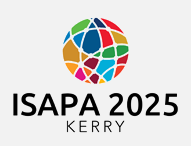Start Date
18-6-2025 9:00 AM
End Date
18-6-2025 10:30 AM
Abstract
The sports development of people with disabilities (PwD) presents unique challenges that must be considered to ensure a sustainable athletic pathway. The Brazilian Parasport Development Model (PSDM) was designed to structure and guide Parasports trajectories. This study aims to present and discuss the PSDM’s framework. Methodologically, the model’s development was based on a comparative analysis of international frameworks. The PSDM structures an athlete’s pathway into two distinct models: one for individuals with congenital disabilities and another for those with acquired disabilities. Both models incorporate pathways for participation-based parasport and high-performance parasport. The congenital model consists of eight stages: Initial Stimulation, Experiment and Play, Play and Learn, Learn and Train, Train and Compete, Compete and Win, Win and Inspire, and Inspire and Reinvent. Additionally, throughout all stages, the model incorporates the first contact with sport and sport classification. For individuals with acquired disabilities, the model includes seven stages, compared to the congenital model, the Initial Stimulation stage has been removed. Instead, a rehabilitation stage was incorporated across all stages. Sport classification is fundamental in defining an athlete’s competitive opportunities in high-performance parasport, influencing both sport selection and career trajectory. It is believed that the application of the PSDM can provide a holistic and sustainable structure for the athletic pathway of PwDs, fostering inclusion, retention, and career progression for those aiming to pursue excellence in parasport. The model helps bridge gaps in para sport development by avoiding early specialization and promoting a balanced approach between participation, high performance, and career transition.
Recommended Citation
Gomes, Mariana Simões Pimentel; Winckler, ciro; and Trigo, Elke Lima, "Parasport Development Model" (2025). International Symposium of Adapted Physical Activity and International Symposium on Physical Activity and Visual Impairment and Deafblindness. 18.
https://sword.mtu.ie/isapa/2025/day3/18
Parasport Development Model
The sports development of people with disabilities (PwD) presents unique challenges that must be considered to ensure a sustainable athletic pathway. The Brazilian Parasport Development Model (PSDM) was designed to structure and guide Parasports trajectories. This study aims to present and discuss the PSDM’s framework. Methodologically, the model’s development was based on a comparative analysis of international frameworks. The PSDM structures an athlete’s pathway into two distinct models: one for individuals with congenital disabilities and another for those with acquired disabilities. Both models incorporate pathways for participation-based parasport and high-performance parasport. The congenital model consists of eight stages: Initial Stimulation, Experiment and Play, Play and Learn, Learn and Train, Train and Compete, Compete and Win, Win and Inspire, and Inspire and Reinvent. Additionally, throughout all stages, the model incorporates the first contact with sport and sport classification. For individuals with acquired disabilities, the model includes seven stages, compared to the congenital model, the Initial Stimulation stage has been removed. Instead, a rehabilitation stage was incorporated across all stages. Sport classification is fundamental in defining an athlete’s competitive opportunities in high-performance parasport, influencing both sport selection and career trajectory. It is believed that the application of the PSDM can provide a holistic and sustainable structure for the athletic pathway of PwDs, fostering inclusion, retention, and career progression for those aiming to pursue excellence in parasport. The model helps bridge gaps in para sport development by avoiding early specialization and promoting a balanced approach between participation, high performance, and career transition.

